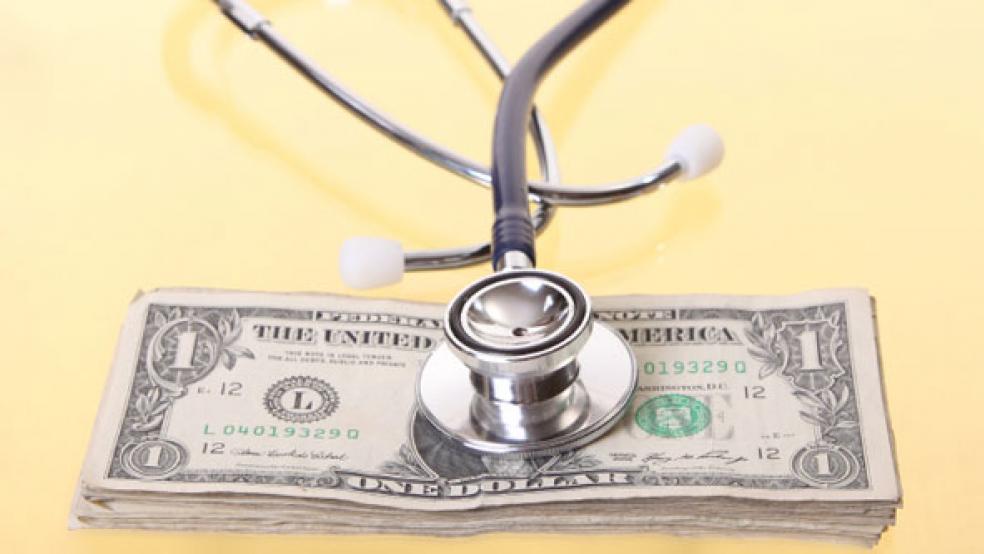When open enrollment begins next week for the president’s new healthcare program, chances are one  of your options will be a high-deductible insurance plan offered in association with a health reimbursement account—80 percent of companies said they planned to offer such a plan to their employees for 2014, according to a recent Towers Watson report.
of your options will be a high-deductible insurance plan offered in association with a health reimbursement account—80 percent of companies said they planned to offer such a plan to their employees for 2014, according to a recent Towers Watson report.
Used in combination, these two components can lead to cost savings of about 25 percent for both companies and employees (without factoring in the additional tax savings) – but they’re still not well understood. Nearly two-thirds of consumers simply don’t know how HSAs work, according to a Fidelity study.
Here’s a quick primer on what you need to know about HSAs:
1. You need to have a high-deductible health plan (HDHP) in order to qualify. In 2014, you would qualify with a deductible of $1,250 for individuals and $2,500 for a family. Until you hit that cap, all of your health care spending (excluding preventative care) will be out of pocket, says Boston-based benefits consultant Pat Haraden.
That will mean some initial sticker shock if you’re used to spending $20 to fill a prescription or visit the doctor. Once you’ve hit the deductible amount, typical co-insurance or co-pay coverage will kick in. Your total out-of-pocket spending maxes out at $6,250 for an individual and $12,700 for a family; after that all health care spending is 100 percent covered.
To offset the high upfront cost of an HDHP, you can open a tax-free HSA. You can then use cash from that account to cover your health care costs, giving you an automatic savings of up to 35 percent, depending on your tax bracket. About 85 percent of employers who offer HSAs make additional tax-free contributions to their employees’ accounts.
2. The money you put in is yours to keep. HSAs are similar to flexible spending accounts, in that the money goes in tax-free and can be used to cover all qualified medical expenses. However, unlike FSAs, which must be used by the end of the calendar year in which you made contributions, HSAs roll over from one year to the next. They’ll stay with you even after you leave your employer.
3. They’re not the best option for everyone. Consumers with chronic illnesses or extremely high medical expenses may not be the best fit for the high-deductible plan, regardless of the HSA benefits. Use this calculator to see whether the lower premiums and tax savings associated with a high-deductible plan will offer you a better value than a traditional health plan.
“You have to look at both the medical insurance side, and the health savings account holistically together to make sure this kind of a plan is the right fit for you,” says Craig Rosenberg of benefits consulting firm Aon Hewitt.
Also, since it takes time to build up a balance in an HSA, consumers who can’t afford to cover their deductible out of pocket could face difficulties if costs mount early on in the life of a plan.
4. To get the real benefits, put in more money than you spend in a year. Think of an HSA as a savings account. The tax benefits of an HSA don’t stop after you’ve put in the money tax-free. Its earnings grow tax-free, and as long as you use it for qualified medical expenses, withdrawals are tax-free as well. “This is the most highly tax-favored savings vehicle out there,” says William Applegate, a vice president with Fidelity Investments.
RELATED: THE COST EXPLOSION OF OBAMACARE BEGINS TO HIT HOME
So it can be a smart financial move to sock away as much money in an HSA as possible. In 2014, individuals can put in $3,300, and families can save $6,500; those age 55 and older can stash an extra $1,000. Set aside in cash or other liquid assets enough money to cover your deductible and expected annual medical expenses. After that, look for funds with low fees that fit into your overall asset allocation strategy.
5. They could be a secret weapon in retirement planning. For consumers who are already maxing out a 401(k) and an IRA, the HSA account is a no-brainer for retirement planning. Fidelity estimates that a couple retiring this year would need $220,000, after Medicare, to cover out-of-pocket health care costs in retirement, not including nursing home care.
So setting designated money aside to fund such costs, especially tax-favored money, can give savers a huge advantage in retirement. After age 65, you can also use HSA money for non-medical expenses, and the withdrawals will be taxed as regular income. (Doing so before age 65 will bring on an additional 20 percent tax penalty.)
6. Soon, you may not have a choice. Right now, 10 percent of employers offer only a high-deductible plan to their consumers, but 44 percent expect to move entirely to a HDHP/HSA plan within the next three to five years, according to a report by Aon Hewitt. Employers love high-deductible health plans and health savings accounts because they’ve been shown to reduce their total health spending. As companies shift more of the health care price burden to employees, consumers become savvier, price-sensitive shoppers – driving overall prices down.





